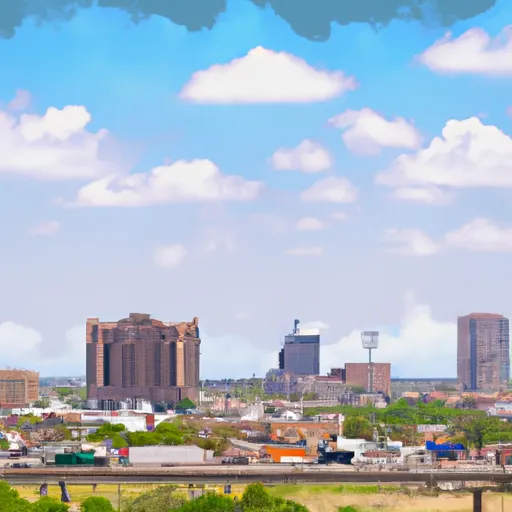-
 Snoflo Premium
Snoflo Premium
Get unlimited access to all our content
With no Ad interruptions! - Start Your Free Trial Login with existing account
La-Feria
Eden Index
Climate
6.2
•
Recreation
2.2
•
Community
1.8
•
Safeguard
3.7/10

La Feria, Texas is a small city located in Cameron County, in the southern part of the state. It experiences a subtropical climate, characterized by hot and humid summers and mild winters. The average annual temperature is around 74°F (23°C). Summers are long and hot, with temperatures often exceeding 90°F (32°C), while winters are short and mild, with temperatures rarely dropping below 60°F (15°C).
Hydrologically, La Feria is situated near the Arroyo Colorado River, which provides water for the region's agricultural activities. The area also has several small lakes and ponds, which offer fishing opportunities for residents and visitors. The region's hydrology is influenced by the Gulf of Mexico and occasional tropical storms or hurricanes.
La Feria boasts various outdoor recreation opportunities. The city has several parks and green spaces where residents can enjoy activities such as picnicking, walking, jogging, and playing sports. Additionally, the nearby Arroyo Colorado River provides opportunities for boating and canoeing. Fishing enthusiasts can enjoy catching various freshwater fish species in the local lakes and ponds. The city also hosts events and festivals throughout the year, offering additional recreational and cultural experiences for residents and tourists alike.
What is the Eden Index?
The Snoflo Eden Index serves as a comprehensive rating system for regions, evaluating their desirability through a holistic assessment of climate health, outdoor recreation opportunities, and natural disaster risk, acknowledging the profound impact of these factors on livability and well-being.
Climate Health Indicator (CHI): 6.2
La-Feria receives approximately
598mm of rain per year,
with humidity levels near 90%
and air temperatures averaging around
24°C.
La-Feria has a plant hardyness factor of
9, meaning
plants and agriculture in this region tend to thrive here all year round.
By considering the ideal temperature range, reliable water supplies, clean air, and stable seasonal rain or snowpacks, the Climate Health Indicator (CHI) underscores the significance of a healthy climate as the foundation for quality living.
A healthy climate is paramount for ensuring a high quality of life and livability in a region, fostering both physical well-being and environmental harmony. This can be characterized by ideal temperatures, reliable access to water supplies, clean air, and consistent seasonal rain or snowpacks.
Weather Forecast
Streamflow Conditions
Southwestern Texas Coastal
Area Rivers
Southwestern Texas Coastal
Snowpack Depths
Southwestern Texas Coastal
Reservoir Storage Capacity
Southwestern Texas Coastal
Groundwater Levels
Recreational Opportunity Index (ROI): 2.2
The Recreational Opportunity Index (ROI) recognizes the value of outdoor recreational options, such as parks, hiking trails, camping sites, and fishing spots, while acknowledging that climate plays a pivotal role in ensuring the comfort and consistency of these experiences.
Access to outdoor recreational opportunities, encompassing activities such as parks, hiking, camping, and fishing, is crucial for overall well-being, and the climate plays a pivotal role in enabling and enhancing these experiences, ensuring that individuals can engage in nature-based activities comfortably and consistently.
Camping Areas
| Campground | Campsites | Reservations | Toilets | Showers | Elevation |
|---|---|---|---|---|---|
| Kaufer - Hubert - SeaWind RV Park | 134 | 9 ft | |||
| Nasking Rec Military - Kingsville NAS | None | 49 ft |
Catastrophe Safeguard Index (CSI):
The Catastrophe Safeguard Index (CSI) recognizes that natural disaster risk, encompassing floods, fires, hurricanes, and tornadoes, can drastically affect safety and the overall appeal of an area.
The level of natural disaster risk in a region significantly affects safety and the overall livability, with climate change amplifying these risks by potentially increasing the frequency and intensity of events like floods, fires, hurricanes, and tornadoes, thereby posing substantial challenges to community resilience and well-being.
Community Resilience Indicator (CRI): 1.8
The Community Resilience Indicator (CRI) recognizes that education, healthcare, and socioeconomics are crucial to the well-being of a region. The CRI acknowledges the profound impact of these elements on residents' overall quality of life. By evaluating educational resources, healthcare accessibility, and economic inclusivity, the index captures the essential aspects that contribute to a thriving community, fostering resident satisfaction, equity, and social cohesion.

